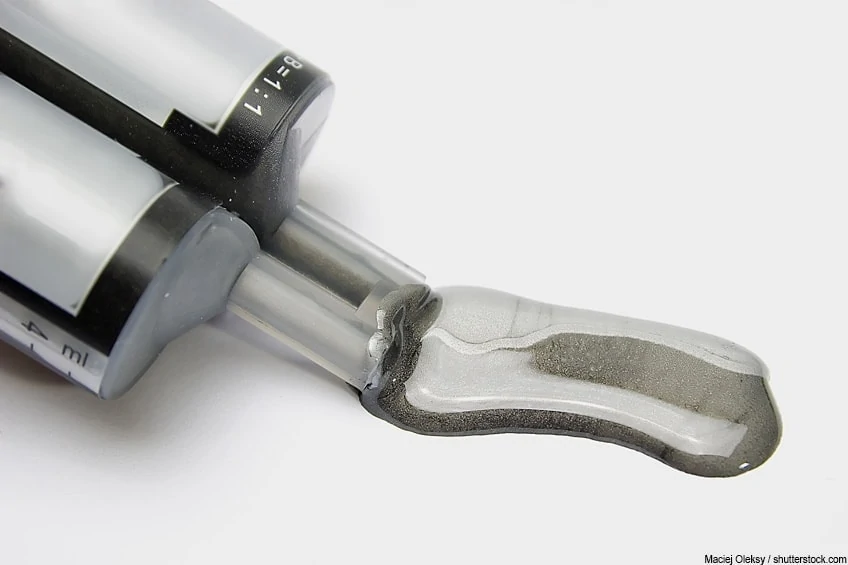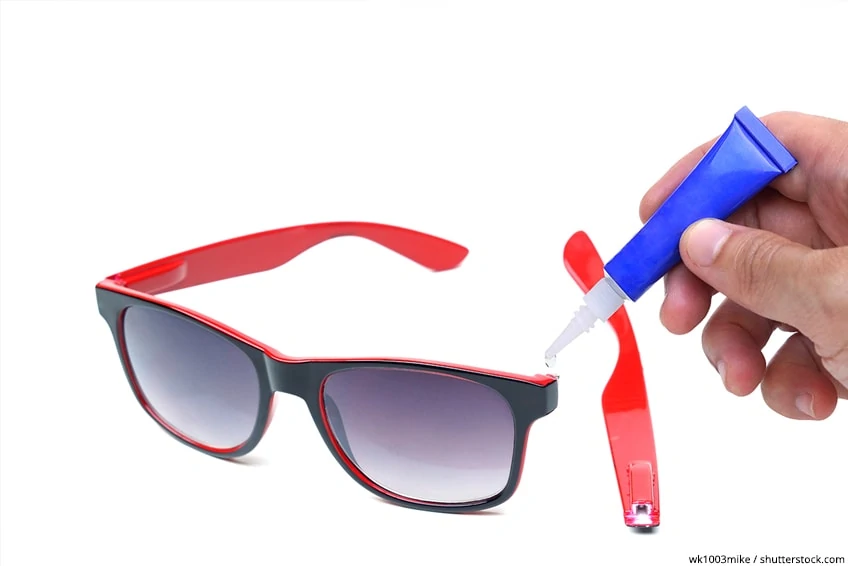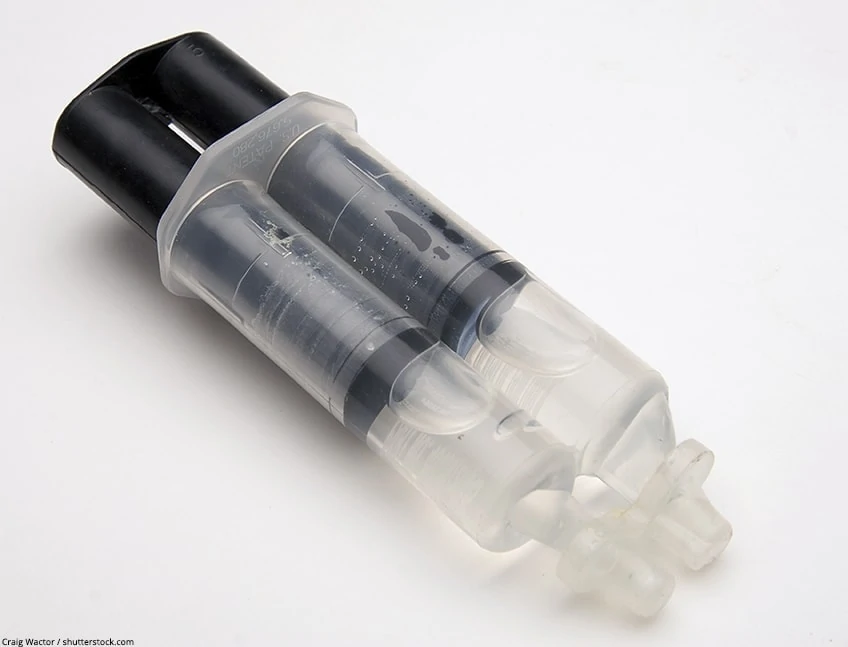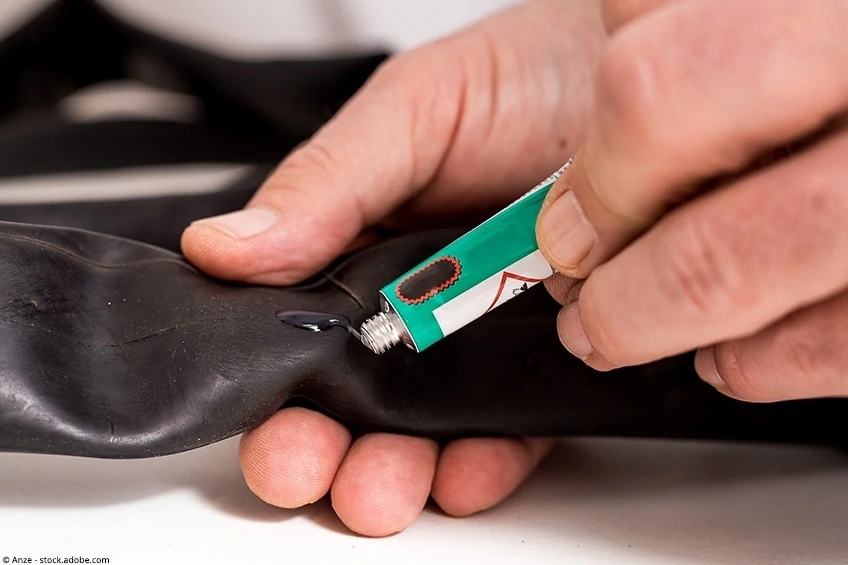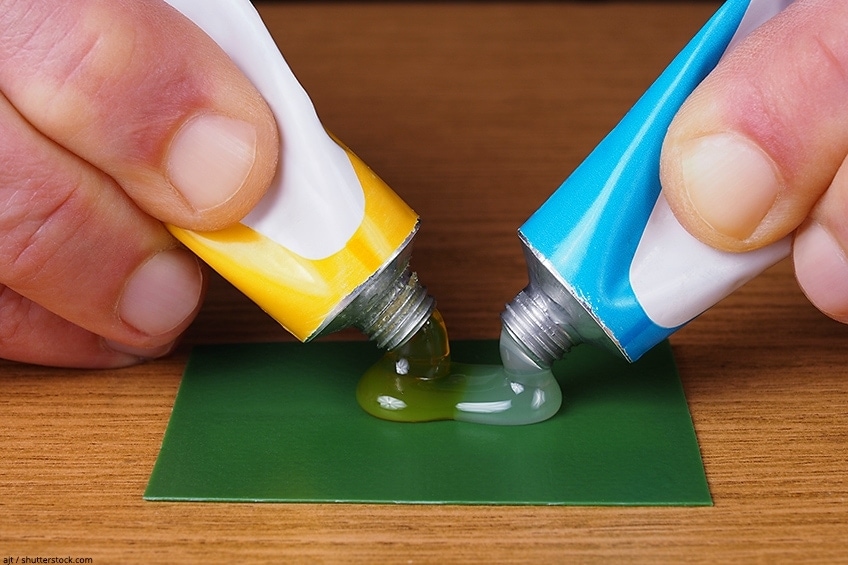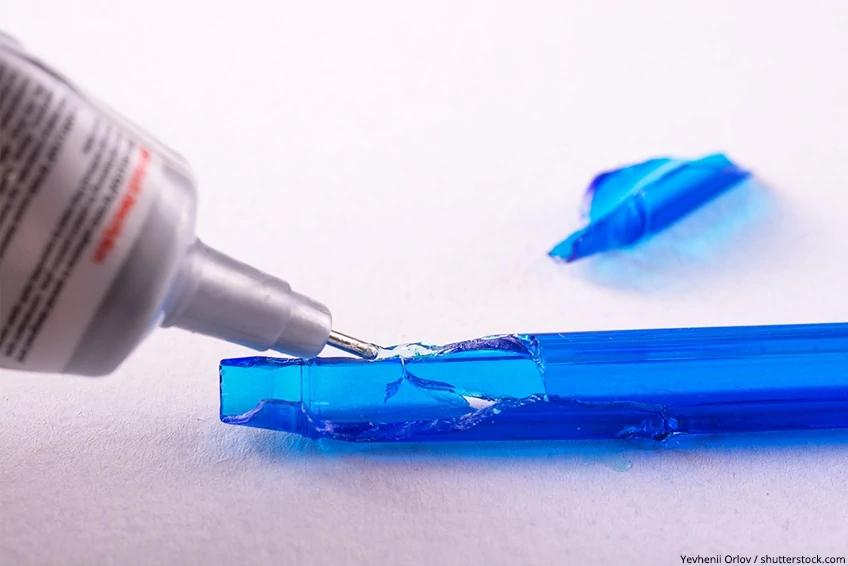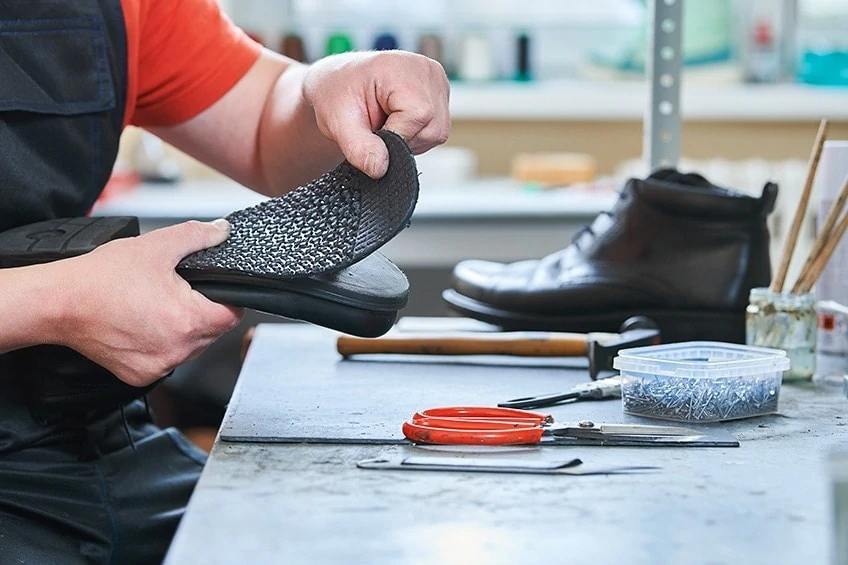Best Epoxy for Plastic – Your complete Guide for Plastic Epoxy
This post may contain affiliate links. We may earn a small commission from purchases made through them, at no additional cost to you. You help to support resin-expert.com
When it comes to glues or adhesives there are many choices available. Not only in the do-it-yourself category but also in the manufacturing industry. Many hobbyists use glue for all kinds of projects as well as things like plastic modeling. However, not every adhesive or glue is made for plastic. The main principal purpose in favor of using epoxy for plastic is its extremely strong adhesive qualities. Also, it is quite versatile in application, for example, it can also be used to fill gaps in addition to acting as an adhesive. While you are thinking about these things, let us know examine some of the best plastic epoxy and learn a bit more about epoxy adhesives.
Table of Contents
The Two Main Forms of Adhesives
The various types of adhesives can have different properties, some may form a strong bond while others have low cohesive strength. Other factors include flexibility, resistance to heat, water-resistance, and much more.
The two main types of adhesives:
- Reactive Adhesives
- Non-reactive Adhesives
Epoxy falls under the reactive adhesives, as it goes through a chemical reaction and then hardens or cures. Epoxy usually consists out of two-parts, the epoxy, and a hardener, which when combined forms a tough layer. Super glue is also a reactive adhesive and can be described as a one-part adhesive, which reacts to environmental conditions like heat. The popular white glue is an example of a non-reactive form of adhesive.
Whenever you are dealing with adhesives, you will need to match it with the material you are working on. Here are a few examples:
- Epoxy for plastic, metal, glass, fiberglass, and rubber
- You can use Acrylic on plastic, metal rubber, glass, and fiberglass
- Urethane can also be used on plastic as well as other materials
- Cyanoacrylates are also useful on plastics, metal, fabric, and leather
In many cases that include plastic repairs, you need to find a compatible adhesive. You should be able to find out what plastic and adhesive works best together by reading the product label.
The best epoxy for plastic is the more durable option when it comes to adhesives, as it can withstand temperatures, UV light, solvents, and can endure a measure of force. We can now move on to some pros and cons of using a two-part epoxy adhesive.
Using Epoxy Glue Pros and Cons
Plastic can come in many different sizes as well as shapes and can be found in almost all homes. Sometimes, these plastic items need a little repair work, so it may be a good idea to keep some epoxy specifically for plastic around the house. You need to know when that plastic pipe under the sink might spring a leak.
There are a lot of advantages to using plastic epoxy but, unfortunately, there are also some difficulties.
Pros
- Can be used on any number of materials including plastics
- Offers great strength and durability
- Withstands high temperatures and mechanical forces
- Able to withstand chemicals
- Great waterproof epoxy for plastic
- You can include additives or accelerators
- Shelf-life is approximately two years
Cons
- Recommended more for those who understand how to use it, perfect mixing ratios are essential
- Can be expensive
- May have a limited pot-life
- Requires safety precautions while working with it, as it could prove harmful
Best Epoxy for Plastic
Are you searching for the best plastic epoxy, then you will know how many choices you have available. To help you out a little on your search, we have selected three of the best epoxy for plastic.
Strongest Epoxy for Plastic: JB Weld PlasticWeld
This particular JB Weld product has been created to form a strong bond with plastics. The various applications for the product include plastic water tanks, plumbing, PVC pipes, and other plastics. The product is compatible with many plastics, however, there are certain plastics like polyethylene it does not adhere to. So, it is always a good idea to study the directions on the product before purchasing.
- J-B Weld is formulated to repair and rebuild plastic compounds
- It takes 25 minutes to set and cures in 3 hours on all surfaces
- PlasticWeld can withstand continuous temperatures
This strongest epoxy for plastic comes in a putty form and is a two-part epoxy that can be mixed by hand. You will have to knead the putty until it you get the perfect thickness or texture. Once this is achieved, you can then apply it to your plastic surface. You have enough time, around 25 minutes before it begins to cure, so you should not have any trouble finishing the job. The plastic epoxy cures in about three hours with an off-white appearance.
Once the putty has set properly, it provides an extremely strong bond and can also hold up against high temperatures. You can easily shape it and mold it; it will also not shrink, and you can even cut, drill, or sand it.
Pros
- Extremely strong
- Short-curing time
- Retains slight flexibility
- Does not shrink
Cons
- It does have a rather strong odor
You can have a small DIY project or some bigger project in mind, the JB Weld PlasticWeld is a great heavy-duty adhesive. It is one of the strongest epoxies for plastic and provides quality and great performance.
Best Value for Money: PC-Clear Epoxy Adhesive
The PC-Clear Epoxy Adhesive Liquid is quite useful, as it can bond to a variety of surfaces including plastics, wood, metal, ceramics, concrete, glass, and fabric. You can also use it for items that have detail, as it does not leave any trace after application. The epoxy is quite tough and is perfect to use on surfaces that will encounter tough conditions.
- Clear epoxy adhesive liquid
- Forms tough bond for durability and flexibility
- Continuous temperature range of -20 to 200 degrees Fahrenheit
This particular epoxy for plastic liquid comes in a double syringe and gives you around 4-minutes of work time before it starts to cure. But once completely dry it forms an effective bond. The curing time does take a while, 24 hours and you need to leave the item the full day to set properly. When mixing the epoxy, it appears opaque, but once it dries fully, it becomes clear.
Pros
- Can withstand extreme temperatures
- It is strong and durable
- Compatible with a variety of materials
- Great value for money
Cons
- Takes 24 hours to cure properly
This is the best value for money epoxy and provides excellent quality.
Best Overall Plastic Epoxy: Gorilla 2-Part Epoxy
The Gorilla 2-Part Epoxy is considered the best overall product because it is versatile and provides a clear and tidy finish. This is a good epoxy for plastic but can also be used on metal, wood, ceramics, glass, tiles, and other surfaces. The product quickly sets in about 5 minutes providing a permanent and strong bond. When dry, it is clear, and you will not be able to notice it is even there.
- Strong, permanent, fast, and gap-filling epoxy glue
- Cures quickly, dries, clear, and is great for multi-surface application
- For tough repairs requiring a durable bond and solvent resistance
This epoxy is an excellent waterproof epoxy for plastic, it is also resistant to solvents. You can use the product for repairs, helping to fill gaps and bonding. The product comes in a syringe, the epoxy, and hardener separate from each other. It dispenses an even amount of both substances, which are then mixed and applied to your surface.
This best plastic epoxy is a wonderful all-around epoxy providing great durability and versatility.
Pros
- Affordable price
- Great waterproof epoxy for plastic
- Resistant to solvents
- Can be used on a number of different materials
- Forms a strong bond
Cons
- May only be able to use as a single application
Most Easy to Use Plastic Epoxy: YANYI Epoxy Putty Stick
The YANYI Epoxy Putty is extremely easy to use and is excellent for any DIY project. All that is required is for you to knead it into shape and apply it to your surface. You can use the epoxy putty to fix leaks, repair pools or toys, seal pipes, or fix appliances. Can be used on plastics, metal, glass, marble, wood, and much more.
- Use to seal pipes, fix leaks in tanks and drains, repair appliances, tools, furniture, toys, automotive parts, pools and cracks in concrete
- Easy to use: Simply cut, hand knead and let it dry
- After 24 hours: completely hardened and permanently fixed
You basically cut then knead the putty, it should begin to form an even color, then apply to the area that needs to be repaired. All-in-all, you have ten minutes to knead, mix, and then use it. The epoxy will harden in 60 minutes and after 24 hours it will harden thoroughly.
If you are looking for an easy to handle epoxy with excellent performance, then the YANI Epoxy Putty Stick will do the trick.
Pros
- Using it is extremely easy
- Form a tough and durable bond
- Can be used for a variety of purposes
Cons
- This epoxy for plastic has an extremely powerful odor
Guide to Epoxy for Plastic
One of the first things to do, it to make sure you do preparations. Your workspace should be clean and neat, remove anything you do not want adhesive to get on. The environment you work in can also play a role, as humidity and varying temperatures can affect the epoxy adhesive and its ability to bond to a surface. The ideal temperature to work in is from 70 to 75 degrees Fahrenheit (21 to 23 degrees Celsius). There should also be almost no humidity while you are working.
Always work in a space that is properly ventilated, many of the adhesives give off fumes and odors that could be harmful to you if you are not careful. Also, many of the adhesives are flammable, which makes working in a proper environment even more important.
Follow these steps when using epoxy for plastic:
- Always read the label directions of your epoxy adhesive
- This means you should have the correct adhesive for your specific application
- Make the surface slightly coarse by sanding it
- Clean away the dust and any dirt
- Hold the syringe up, then snip the tip-off
- Press the syringe a little to push any bubbles up
- Have a disposable plate or tray ready
- Press the plunger down, which will then release both contents evenly
- Pull plunger slightly back and wipe, then replace the cap
- Mix the hardener and the resin for about a minute
- Apply to your surface
- Bond your items press tightly
- Products may have varying setting and curing times, so read your labels
- Remove any excess adhesive
You also get the putty epoxy adhesives, which require you to knead the two components together before application. Many of the epoxy putty products can be used as an adhesive but also as a filler. Removing the excess epoxy putty can be done by using a sharp blade.
How to Remove Plastic Epoxy
These products are made to be tough, so removing them will not be the easiest thing to do, especially if you leave it until it hardens thoroughly. This is why you remove anything in the vicinity of your workspace you do not want glue to get on.
When dealing with epoxy that has hardened may be difficult but not impossible. You will first have to soften the epoxy with an adhesive remover. You can also try denatured alcohol or paint thinners. Take a cloth that has been dipped into the remover and wipe the affected area. You should be able to remove the resin without leaving any residue, especially if you have used the correct adhesive remover. Always work in a ventilated space and wear gloves to avoid getting onto your skin.
When the epoxy is still soft, it should be easier to remove. Take and use some acetone, which should help. Using a cloth with the acetone, wipe the area with the glue and it should eventually lift off.
If you do get some epoxy onto your skin, the best thing is to act fast. You can either use a cloth dipped into some vinegar and placed over the area or some acetone on the tip of an earbud. Rub onto the adhesive until it comes off. A tip when using epoxy putty, keep your gloves moistened, this will help to make it easier on application and creates a smoother look.
Safety Tips When Working with Plastic Epoxy
When working with any kind of adhesives, it is recommended you follow certain safety guidelines.
- Use gloves to save your skin from harm
- Protecting your eyes is also important, so wear some goggles
- Even if there are no toxic fumes, it is always good to work in an area with good air ventilation
If you do happen to get any adhesive in the eye you should wash and then go immediately to a doctor.
View our Strong Plastic Epoxy web story here.
Questions and Answers
What is the Drying Time for a Two-Part Epoxy Adhesive?
This depends on the product you are using, the environment you are in, and other factors, so always check the label to make sure. Generally, it should take about 24 hours to fully cure and harden.
How do You Mix a Plastic Epoxy Adhesive?
Epoxy adhesives need to be mixed in a precise ratio, but many products come in pre-measured syringes which you can then use to apply. Some epoxy adhesives also come in the form of a two-part putty or paste, which you then have to knead together before application.
Is Epoxy for Plastic a Good Choice?
Yes, epoxy is a great choice when it comes to using on plastics, as it will create a strong adhesive bond. They augment the structural strength of the plastic and also provide, provide chemical resistance, and offer a certain amount of flexibility. However, all products are not the same, so you will have to search for the correct one for your project.
Do you get a Waterproof Epoxy for Plastic?
Yes, epoxy adhesive offers many benefits including heat-resistance, chemical resistance as well as water resistance. Great to use on those plastic plumbing problems.
How Much Epoxy Adhesive Should You Buy?
You should choose the size that best suits your needs, do you need adhesive for a small or larger area. Some adhesives come in a one-time-use container, which is great for smaller projects. However, you will need a larger amount for bigger projects, so make sure you work this out before you go out and buy.
Can You Add More Hardener to Increase Durability?
No, when mixing a two-part epoxy adhesive, you will need to stick to precise measurements. The mixing ratio for epoxy is usually one-part resin to one-part hardener and if you deviate from this, the final results will not be as expected.
In conclusion, if you prepare and do the research needed, using epoxy for plastic can be a relatively simple job. Make sure you have the correct tools and a plan set out; you should have no problems using the best epoxy for plastic.


